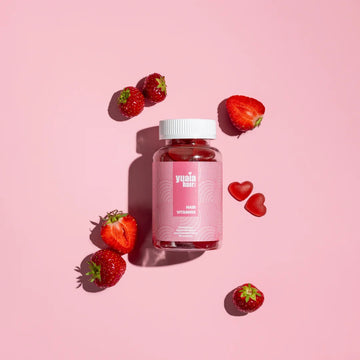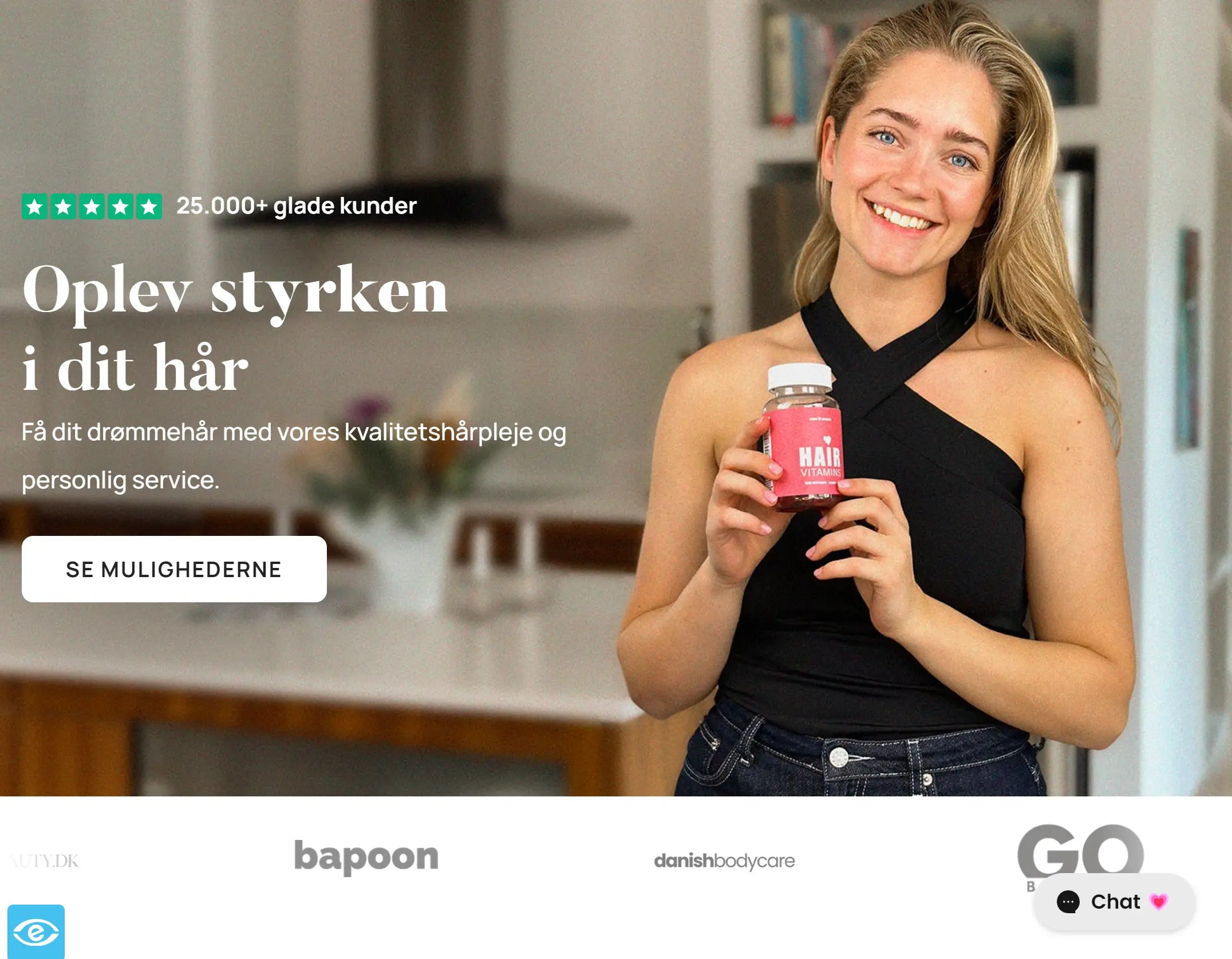
Air drying vs. blow drying: Why letting your hair dry naturally is better
by Nitesh Sharma on Apr 25, 2025

Read through by Dorthe Kristensen
Hairdresser and former co-owner of the award-winning hairdressing chain Zoom by Zoom
With many years of experience in the hairdressing industry, Dorthe has advised many customers about hair and hair care. Dorthe has read through this blog entry to ensure high quality and professionalism. This blog post is professionally updated on April 25, 2025.
Table of contents
A growing number of people are choosing natural, gentle methods to care for their hair, with air drying becoming a preferred approach for many. This method not only reduces reliance on heat tools but also helps retain the hair's natural texture and integrity.
Hair is most vulnerable when it's wet. The cuticle, the outer layer of each strand, swells and lifts, making it more prone to heat damage. While heat styling can exacerbate this fragility, air drying allows the hair to recover gradually. However, it must be done properly to avoid prolonged dampness, which can lead to frizz, mildew on the scalp, or breakage.
Comparing air drying and blow drying: Which is better?
Choosing between air drying and blow drying is a key decision in building an effective haircare routine. Both methods offer their own benefits and drawbacks, and understanding when and how to use each can make a noticeable difference in the health and appearance of your hair. In the following sections, we explore both approaches in depth to help you
The impact of blow drying
Blow drying, on the other hand, provides quick and convenient results, offering styling precision and volume that may be difficult to achieve otherwise. It is a particularly appealing option for those with limited time or who need to style their hair for specific occasions, as it allows for quicker drying and the ability to shape the hair with brushes and tools. Blow dryers equipped with diffuser or concentrator attachments can help target airflow and reduce unwanted frizz, making it easier to achieve a polished look.
However, frequent use of high heat can compromise hair health over time, leading to issues such as excessive dryness, split ends, and brittleness, especially if heat protectants are not used. Intense heat strips the hair of its natural oils and weakens the protein structure that gives strands their strength and flexibility. Over time, this can make the hair more prone to breakage and dullness, particularly for already delicate or processed hair types.
The repeated stress from blow drying can disrupt the hair cuticle, weakening it structurally. Even with advanced ionic or ceramic technologies made to minimize damage, the cumulative effect of daily blow drying without adequate protection can be significant. For this reason, it’s recommended limiting blow drying to at most a few times per week and always using a quality heat protectant spray or cream to serve as a barrier between the hair shaft and the hot air.
determine what works best for your specific needs and lifestyle.
Why air drying is a better choice
Air drying offers a gentle and natural alternative that minimizes heat exposure. This is particularly beneficial for those with fragile, color-treated, or chemically processed hair, as it allows the hair to retain its natural moisture balance and texture.
Rather than focusing on instant styling results, air drying encourages patience and care—values that often lead to longer-term hair health. For many, using this technique leads to stronger strands, improved scalp condition, and more consistent texture with fewer flyaways.
How to air dry hair without frizz
-
Gently blot hair: Use a microfiber towel or cotton T-shirt to blot excess water. Do not rub the hair.
-
Apply moisture-locking product: While damp, apply an anti-frizz leave-in conditioner or serum. For curly hair, use a silicone-free curl cream.
-
Avoid touching your hair: Let your hair dry naturally without combing or touching to avoid disrupting its pattern.
-
Use a protective style: Put your hair in a loose braid or bun to reduce frizz and protect from humidity.
-
Finish with a smoothing product: Once dry, apply a few drops of smoothing oil or a humidity-resistant mist to maintain a polished look.
How do you usually dry your hair after washing?
The best air drying techniques for each hair type
Each hair type benefits differently from air drying, and tailoring your method can lead to healthier and more manageable results. Adapting your routine to match your hair type enhances both appearance and overall condition.
Hair textures and moisture levels vary, affecting how air drying works. Curly, fine, thick, and straight hair all respond differently, and external factors like climate also play a role. Identifying your specific needs is key to achieving the best outcome.
Fine hair
Fine hair often lacks volume and can quickly appear limp or weighed down, even with minimal product. To avoid this, choose lightweight, water-based styling products such as volumizing mists or mousses formulated specifically for fine hair. These help lift the roots and support natural texture without leaving residue. Heavy creams or oils should be avoided, as they can flatten the hair and create a greasy appearance.
For added volume, let the hair dry in an elevated position or use clips at the crown to set lift at the roots. Once nearly dry, applying a root-lifting spray or dry texturizing mist can further boost fullness. With the right products and a few simple styling adjustments, fine hair can achieve a light, voluminous air-dried finish that lasts throughout the day.
Curly hair
Curly hair often struggles with dryness and frizz due to its structure, which makes it harder for natural oils to travel from root to tip. To maintain definition and hydration, it's important to use curl creams or gels that lock in moisture and shape without weighing the hair down.
Techniques like “plopping” — wrapping damp curls in a cotton T-shirt or microfiber towel — help reduce frizz and encourage curl formation by minimizing friction. Scrunching the curls upward as they dry can further boost bounce and definition. For added moisture throughout the day, a leave-in conditioner or curl refresher spray can help preserve shape and shine. With the right products and techniques, air drying curly hair can enhance its natural texture and keep it healthy and hydrated.
Thick or coarse hair
Thick hair or coarse hair retains moisture longer and requires extra care to dry evenly. Start by blotting with a microfiber towel to remove excess water before applying any product. Working in sections ensures even distribution and helps hydrate the hair effectively.
Rich creams, thick leave-ins, or oils like argan or jojoba can lock in moisture, reduce frizz, and enhance softness. Use a wide-tooth comb or detangling brush to distribute the product evenly. For better control, loosely braid or twist damp hair to manage volume and shape. Allowing it to dry in these sections helps achieve a smoother, more defined texture.
Once dry, gently undo the braids or twists for a polished finish. A light smoothing serum or finishing oil can add shine and reduce flyaways, keeping the hair manageable between washes.
Wavy hair
Wavy hair falls between straight and curly textures and can vary in pattern from wash to wash. It’s prone to losing shape or becoming weighed down, so lightweight products that provide moisture and soft hold are key.
Leave-in conditioners, sea salt sprays, and light mousses help enhance natural waves without stiffness. Finger-combing is preferable to brushing, as it preserves wave structure and reduces frizz. Scrunching damp hair during the drying process supports definition, while clipping at the roots adds lift.
To maintain wave pattern overnight, consider “pineapple” styling or using a bamboo pillowcase to minimize friction. The next day, refresh waves with a water and leave-in spray mix to restore bounce without rewashing. With the right care and minimal handling, wavy hair can maintain a soft, effortless texture.
How long does it take for hair to air dry?
Air drying time varies based on hair type, density, porosity, and environmental factors like humidity and airflow. Fine or low-density hair may dry within 30 minutes to an hour, while thicker or more porous hair can take two to four hours or more.
To speed up the process, use a microfiber towel or cotton T-shirt to gently blot excess water, which helps reduce frizz and protects the cuticle. Combining gentle drying techniques and minimal product use can shorten drying time while maintaining hair health.
Achieving healthy, stylish hair naturally
Air drying is not just a passive alternative to blow drying—it's a proactive strategy for healthier hair. When paired with proper techniques and suitable products, it preserves moisture, prevents damage, and highlights the hair's natural beauty. Embracing air drying means embracing a more mindful, effective approach to hair care that nurtures both your hair and the environment.
Get a 10% discount code sent to you
Receive the best tips and tricks for your hair from Lotte and Nanna 🥰
 2-5 day delivery
2-5 day delivery
 25.000+ satisfied customers
25.000+ satisfied customers
 Satisfaction Guarantee
Satisfaction Guarantee








